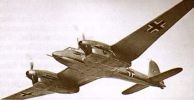
Focke-Wulf 187479 viewsThis plane was excellent when it appeared, but ignored in favor of the Bf110. The pilots in Norway were enthusiastic about its potential and demanded quantity production, but instead they were ordered to give the planes back to Focke-Wulf because they were only in inofficial use. Some Fw187 were also used in the aerial shooting school in Vaerlose, Denmark.
In the facility defense role, they shot down several aircraft. Remarkable was the great maneuvrability; the Rechlin test pilot Heinrich Beauvais was of the opinion that it circled comparable to the Bf109 and rolled only slightly slower than the Bf109, while spped and range were superior. But the disastrous (but good-looking) Me210 and Me410 design was preferred by the air ministry
|
|
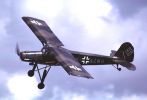
Fieseler Fi 156 Storch478 viewsThe Storch was first flown in 1936. The fabric-covered Storch observation monoplane served the German Forces throughout World War Two wherever the Germans saw combat. With ten times the life expectancy of the Bf 109 fighter, the Storch ("Stork") proved to be a rugged Short Take Off and Landing (STOL) airplane that gained the respect of all its pilots. Over 2,900 Fi 156s were produced. Today, more than 30 Fi 156s and their brethren have survived in Europe and North America, and about 20 are still capable of flying today.
|
|
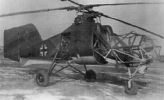
Fl282-1472 views
|
|

focke wulf 189470 viewsThe Focke Wulf 189 was a reconnaissance aircraft which served with the Luftwaffe (German Airforce) during World War II. Only 846 were built.
The 189 was used mainly on the Eastern Front and was known both as ‘The Flying Eye’, due to the superb all-round vision afforded by its distinctively glazed fuselage, and as the Uhu (Owl). The 189C was an attempt by Focke Wulf to build a ground attack version of it's successful recon plane.
|
|
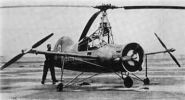
fl185465 views
|
|
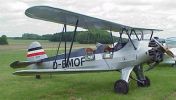
Focke-Wulf Fw 44465 viewsThe Focke-Wulf Fw 44 was a two-seater biplane known as the Stieglitz (Goldfinch).
It was produced by Focke-Wulf for pilot training and aerobatics. The Luftwaffe used the Fw 44C - the final version - almost universally as a trainer during World War II.
|
|
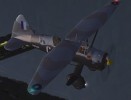
Westland Lysander mk-I burma 1942456 viewsmkI burma 1942 - model for cfs2 - fs2004 - fs2002 simulator, on sale at Icarus:
http://www.icarusgold.com/Lysander.htm
|
|
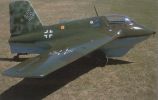
Messerschmitt Me 163B-1446 viewsAlthough the aircraft's two MK 108 30mm cannons were capable of downing a four-engine bomber with only three or four hits, the Komet's high speed, coupled with the cannons' slow rate of fire and short range made effective gunnery nearly impossible against the slow moving bombers. As a result, Me 163 pilots recorded a total of only nine kills. Although capable of reaching its service ceiling of 12,100 m (39,690 ft) in just under three-and-a-half minutes, the Me 163 carried only enough fuel for eight minutes of powered flight. An improved variant of the aircraft with a greater endurance and a tricycle landing gear, designated the Me 163 C, was also produced in small numbers before the war's end, but was not flown operationally.
|
|
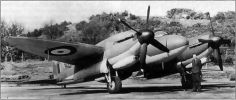
vickersf741446 views
|
|
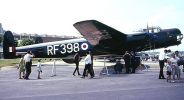
Avro Lincoln443 viewsHeavy bomber developed from the Lancaster, and initially known as the Lancaster B Mk.IV. The Lincoln, bigger and with a longer range, was developed for a British campaign in the far East, but was never used in this role because of the end of WWII. It compared unfavourably with more modern designs like the B-29, but was kept in service until 1963 and saw in combat over Kenya and Malaya. One was shot down on its way to Berlin in 1957.
|
|
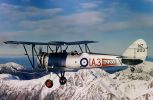
AVRO 626441 viewsThe Avro 626 was developed in 1930 from the Tutor with an optional third seat in a rear cockpit with provision for a gun ring. Numerous sales were made to foreign air forces up to 1939, some of which survived in second-line service until 1945. At least two 626s survived in Belgium's Aeronautique Militaire until 1940.
Avro Prefect: The RAF bought seven Tutor/Avro 626 hybrids, two-seaters with Lynx IVC engines, to Specification 32/34 as navigation trainers for service at School of Air Navigation, Andover. Delivered in 1935, they operated during WWII on miscellaneous duties. Four Lynx-engined Prefects supplied to RNZAF in 1935 were three-seaters; one survived to 1945.
|
|

Avro Lincoln428 viewsHeavy bomber developed from the Lancaster, and initially known as the Lancaster B Mk.IV. The Lincoln, bigger and with a longer range, was developed for a British campaign in the far East, but was never used in this role because of the end of WWII. It compared unfavourably with more modern designs like the B-29, but was kept in service until 1963 and saw in combat over Kenya and Malaya. One was shot down on its way to Berlin in 1957.
|
|
|
|